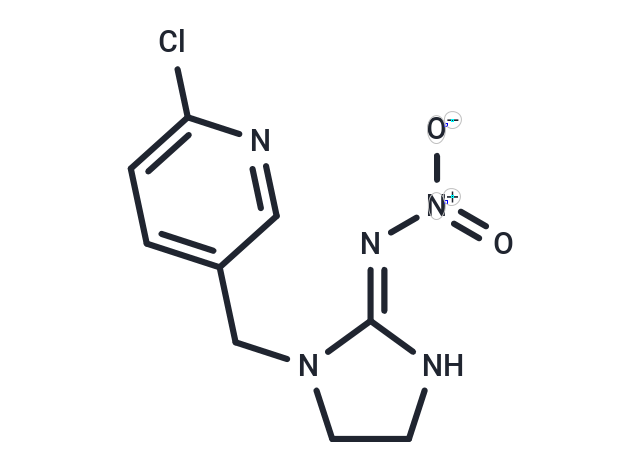Shopping Cart
Remove All Your shopping cart is currently empty
Your shopping cart is currently empty
Imidacloprid is a systemic chloronicotinyl insecticide, which can be effectively used in agriculture to control pests .

| Pack Size | Price | USA Warehouse | Global Warehouse | Quantity |
|---|---|---|---|---|
| 50 mg | $39 | In Stock | In Stock | |
| 100 mg | $53 | In Stock | In Stock | |
| 200 mg | $81 | In Stock | In Stock | |
| 1 mL x 10 mM (in DMSO) | $45 | In Stock | In Stock |
| Description | Imidacloprid is a systemic chloronicotinyl insecticide, which can be effectively used in agriculture to control pests . |
| In vitro | Three different cell models were used;?adipocytes (3T3-L1), hepatocytes (HepG2), and myotubes (C2C12).?These cells were treated with imidacloprid (0, 10, and 20 μM) for 4-6 days followed by treatment with insulin for 15 min to determine responses.?Insulin stimulated glucose uptake was reduced by imidacloprid in all three cell culture models.?Treatment with imidacloprid reduced phosphorylation of protein kinase B (AKT), one of the major regulators of insulin signaling, without changing overall AKT expression.?Subsequently, imidacloprid reduced phosphorylation of ribosomal S6 kinase (S6K), which is a downstream target of AKT and also a feed-back inhibitor of insulin signaling.?Suggest that imidacloprid could induce insulin resistance by affecting the insulin signaling cascade, particularly up-stream of AKT, in adipocytes, liver, and muscle[1]. |
| Molecular Weight | 255.66 |
| Formula | C9H10ClN5O2 |
| Cas No. | 138261-41-3 |
| Smiles | [O-][N+](=O)\N=C1/NCCN1CC1=CC=C(Cl)N=C1 |
| Relative Density. | 1.54. Temperature:23 °C. |
| Storage | Powder: -20°C for 3 years | In solvent: -80°C for 1 year | Shipping with blue ice/Shipping at ambient temperature. | |||||||||||||||||||||||||||||||||||
| Solubility Information | DMSO: 300 mg/mL (1173.43 mM), Sonication is recommended. | |||||||||||||||||||||||||||||||||||
| In Vivo Formulation | 10% DMSO+40% PEG300+5% Tween 80+45% Saline: 5 mg/mL (19.56 mM), Sonication is recommended. Please add the solvents sequentially, clarifying the solution as much as possible before adding the next one. Dissolve by heating and/or sonication if necessary. Working solution is recommended to be prepared and used immediately. The formulation provided above is for reference purposes only. In vivo formulations may vary and should be modified based on specific experimental conditions. | |||||||||||||||||||||||||||||||||||
Solution Preparation Table | ||||||||||||||||||||||||||||||||||||
DMSO
| ||||||||||||||||||||||||||||||||||||
| Size | Quantity | Unit Price | Amount | Operation |
|---|

Copyright © 2015-2026 TargetMol Chemicals Inc. All Rights Reserved.